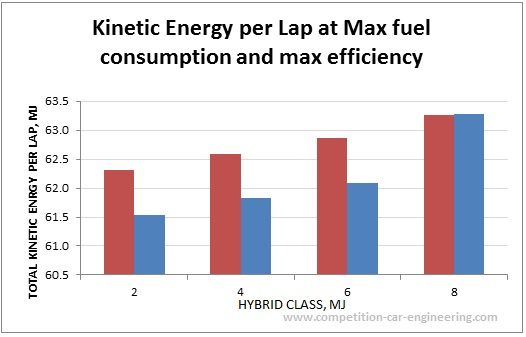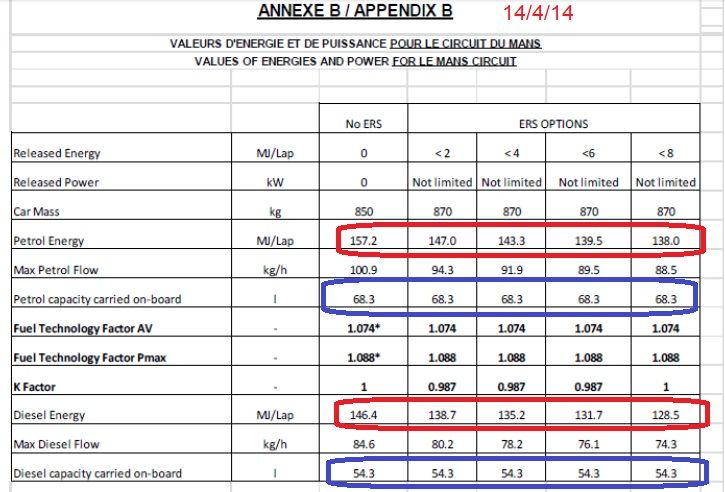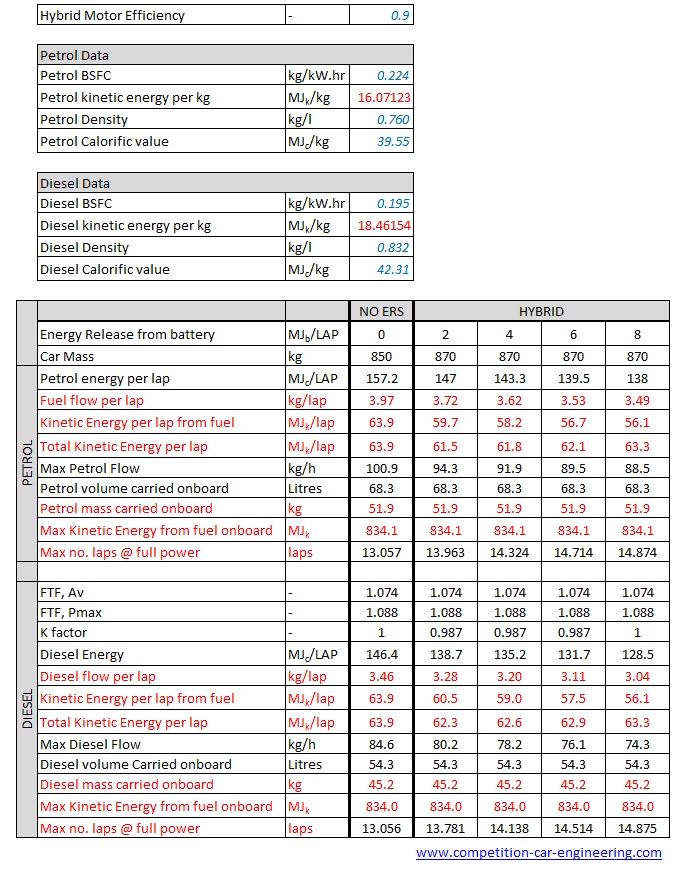It is worth showing the full diesel vs Petrol energy allowance to avoid confusion:-p___mill wrote:Thanks again for running the numbers. I expected there to be less of a speed disadvantage, not an advantage at Le Mans. Was that scaling factor in the rules pre-homologation? If so it could be what lead Audi to choose the 2MJ option in spite of the rest of the championship.

The 2, 4, and 6MJ Diesels get relatively more fuel energy per lap in accordance with the "K-Factor" which balances the respective ICE weights... i.e. because the Diesel engine weighs more, they get more fuel energy per lap as a compensation...
I don't understand why the K-factor is 1 for 8MJ cars... as this implies that the engine weights are suddenly the same when you have the biggest hybrid system....
To my mind, this graph suggests that, due to the different engine weights, if we assume that all competitors will run at the 870kg limit, and run with the biggest hybrid system possible within that limit, a 2MJ Diesel is equivalent (in lap time terms) to a 6.5 to 7MJ Hybrid Petrol... which would be fair enough if that is what the ACO have determined... except we know that a 6MJ Petrol is "allowed" to do more laps on a single fuel tank (at max fuel consumption) than a 2MJ Diesel.... so there is no parity on that front...
????







